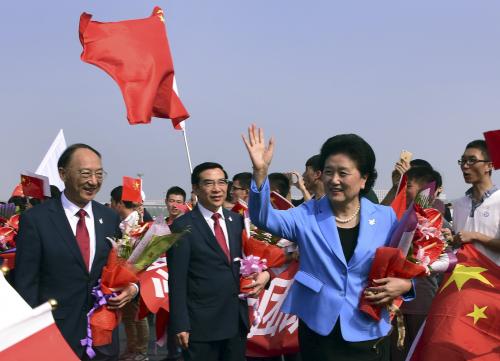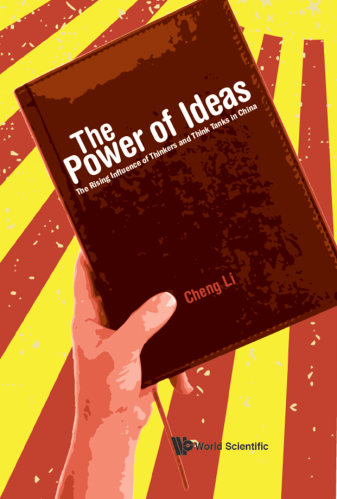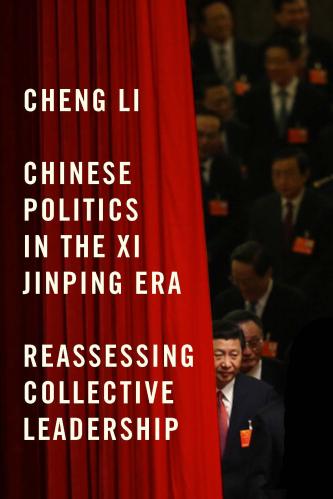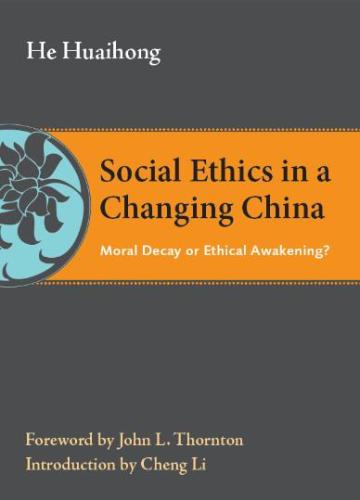Cheng Li and Yiou Zhang explain the rules and norms on the elite selection of ethnic minority leaders. This piece was originally published in China-US Focus.
Fraught with patron-client ties and factional infighting, Chinese elite politics has long been perceived as an ever-changing game, with the shadows of political instability and uncertainty never looming far off. Though the Chinese leadership has labored over the past three decades to instill rules and norms into its elite selection process, concerns have persisted over the effectiveness and durability of these nascent institutional mechanisms. But have observers of Chinese politics been too cynical, overlooking important institutional developments in how elites are recruited? To what extent have proclaimed regulations actually been implemented? What institutional limitations and political barriers stand in the way?
The selection of ethnic minority leaders provides a good case study that sheds valuable light on these questions. China is a multiethnic country that is dominated by Han, and the Chinese Communist Party (CCP) has long recognized the value of including ethnic minority cadres among party-state elites, both for propaganda purposes and to inspire minority groups to view the system as affording opportunities for their own advancement. Recruiting and training ethnic minority cadres has been a continuous effort across different generations of CCP leaders, going back to the founding of the People’s Republic of China (PRC) in 1949. While multiple sets of guidelines and instructions regarding the selection of ethnic minority leaders have circulated over the years, the system was not formally institutionalized until 1984, when the National People’s Congress (NPC) passed the Law of Ethnic Minority Autonomous Areas of the People’s Republic of China.
The Law stipulates that the top post in the local government in all ethnic minority autonomous areas (from the township level to the provincial level) should be held by a leader from the same ethnic minority background as the majority of citizens in that area. Second only to the party secretary, the head of a local government has significant power over decision-making and the management of regional affairs. China has 155 ethnic minority autonomous areas, including 5 provincial-level regions, 30 prefectures, and 120 counties. According to the Chinese government, currently all of the heads of the local governments in these areas are non-Han. In fact, since the installation of the Law, this particular institutional rule has never been violated at the provincial level. Furthermore, revisions to the Law in 2002 reclassified the system of regional ethnic autonomy from a Chinese political institution that was “important” (重要) to one that is “fundamental” (基本), underlining the steady institutionalization of the process for selecting ethnic minority leaders.
At the top echelon of China’s politics, the selection of ethnic minority leaders is bound more by informal norms than explicit rules. In the six CCP Central Committees that have formed since the 13th Party Congress in 1987, ethnic minorities have consistently constituted around 10 to 11 percent of the membership (including both full members and alternate members), even though no regulation has been openly promulgated on the representation of ethnic minorities at this highest level of leadership. Furthermore, this proportion is almost double the average of the five prior congresses, illustrating the CCP’s increased attention to maintaining a stable ethnic minority presence in this important body. Nevertheless, most of the ethnic minority leaders on the Central Committee are alternate members. For example, only 10 full members (4.9%) of the 18th Central Committee are ethnic minorities. Over the past three decades, only one minority leader, Hui Liangyu (回良玉), a Hui, has served as a Politburo member.
In the State Council, the directorship of the State Ethnic Affairs Commission has always been held by an ethnic minority leader. There has usually been at least one ethnic minority leader serving as a state councilor or a vice premier: for example, Ismail Amat (司马义·艾买提) as state councilor from 1993 to 2003, Hui Liangyu as vice premier from 2003 to 2013, Dai Bingguo (戴秉国) as state councilor from 2008 to 2013, and Yang Jing (杨晶) as state councilor from 2013 to present.
The CCP leadership, of course, does not place ethnic representation above its own ultimate decision-making power in state affairs. Ethnic minority leaders have never made it onto the Politburo Standing Committee, the de facto nexus of power in China. For the five ethnic minority autonomous provinces, the region’s top post of provincial party secretary has always been given to a Han Chinese throughout the past 30 years. It is also rare for an ethnic minority leader to become party secretary of a non-ethnic minority autonomous province. The only three exceptions in recent decades are Hui Liangyu, the former party secretary of Jiangsu; Shi Zongyuan (石宗源), the former party secretary of Guizhou; and Bayanqolu (巴音朝鲁), the current party secretary of Jilin.
Analysts generally rely on factors like personal ties and factional identity to assess a leader’s promotional prospects. By combining an understanding of the rules and norms with these traditional aspects, we can better identify some rising stars in the leadership. Among the ethnic minority members of the current Central Committee of the CCP, two Mongolian leaders—Yang Jing (b. 1953) and Bayanqolu (b. 1955)—and one Uighur leader, Nur Bekri (努尔 · 白克力, b. 1961), are likely candidates for the next Politburo, given their broad leadership experience.
Yang Jing now serves as a member of the CCP Central Secretariat and as a state councilor (and, concurrently, secretary general of the State Council). His is the rare case of an ethnic minority leader concurrently holding key administrative positions at the national level in both the party organ and the state. A native of Jungar Banner, Inner Mongolia, Yang began his career in the Chinese Communist Youth League (CCYL) in his native autonomous region and became secretary of the Inner Mongolia CCYL Committee in 1993. Yang’s time in this role coincided with Li Keqiang’s tenure as first secretary of the 13th CCYL Central Committee. As a result, Yang is also viewed as a rising tuanpai leader. From 2004 to 2008, Yang served as head of the Inner Mongolia Ethnic Minority Autonomous Region. He was then transferred to Beijing to become director of the State Ethnic Affairs Commission. With his ethnic minority identity and tuanpai background, Yang quickly rose up the ranks to his current position.
Similar to Yang Jing, Bayanqolu also accelerated his career mainly through the CCYL system. After serving briefly as secretary of the Inner Mongolia CCYL Committee, Bayanqolu was promoted in 1993 to the CCYL Secretariat, where he spent the next few years working alongside Li Keqiang, who was in charge of the CCYL Secretariat. In 2001, Bayanqolu was transferred to Zhejiang, one year before Xi Jinping’s arrival there. In Zhejiang, he served as vice-governor (2001-2003), standing member of the Zhejiang Provincial Party Committee, and secretary of Ningbo City (2003-2010). He then was transferred to Jilin for various leadership roles and officially became the party secretary of Jilin in 2014. Bayanqolu is the only ethnic minority leader who currently serves as a provincial party secretary. As an ethnic minority leader with broad regional experience and a close working relationship with both Xi Jinping and Li Keqiang, Bayanqolu apparently has a good chance for further promotion.
Nur Bekri, currently the director of the National Energy Administration and a deputy director of the National Development and Reform Commission (NDRC), is one of only a few young leaders (those born after 1960) at the ministerial level. As a Uighur born in Bole, Xinjiang, Nur advanced most of his career in his native autonomous region, first working in the Party Committee of Xinjiang University, then as mayor of Urumqi (1998-2000). In 2008, when he was only 47, Nur became governor of the Xinjiang Ethnic Minority Autonomous Region. After serving as the second in command in Xinjiang for six years, Nur was transferred to his current roles at the central level. Nur’s appointment was notable in the sense that it was the first time that an ethnic minority leader had been tapped to lead a key national economic agency.
This brief review of the appointment patterns of ethnic minority leaders clearly indicates how institutional rules and norms factor into the selection of ethnic elites. These rules and norms provide a framework for the stable representation of ethnic minority leaders at different levels of governance. The three rising ethnic minority leaders discussed above all benefited from this institutional arrangement when they started building their careers in their native autonomous regions. However, their cases also demonstrate how personal ties and factional politics continue to play a significant role, especially in promotions to top leadership posts.
The upcoming 19th Party Congress will further reveal the extent to which institutionalization is increasing ethnic representation in China’s elite politics. By observing this particular aspect of Chinese leadership politics, we can begin to perceive the important ways in which a wider array of rules and norms are shaping elite recruitment in China. As these developments will undoubtedly influence Chinese politics more broadly, they should continue to be a focus of attention and analysis.
The Brookings Institution is committed to quality, independence, and impact.
We are supported by a diverse array of funders. In line with our values and policies, each Brookings publication represents the sole views of its author(s).









Commentary
Op-edAssessing institutional rules in China’s elite selection: The case of ethnic minority leaders
April 19, 2017